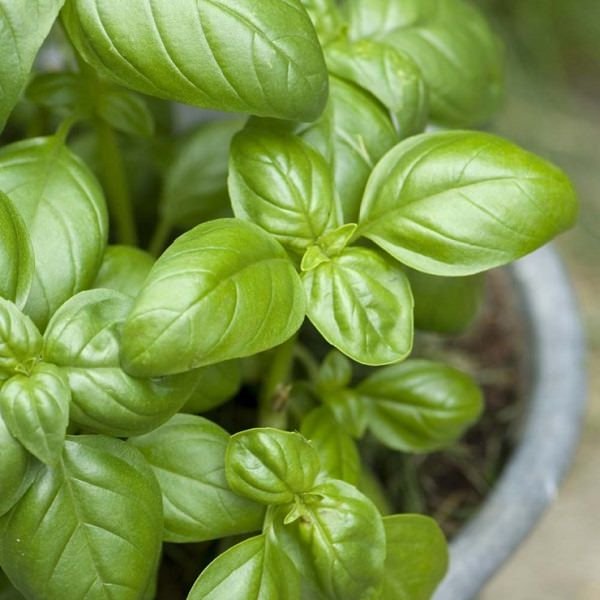Take a look at these 9 Essential Basil Growing Tips to have a lush and productive basil plant in your herb garden!
Basil is one of the most commonly grown herbs. It prefers a warm temperature, above 50 F (10 C), and doesn’t tolerate frost.
1. For growing a basil plant, choose a sunny spot. This herb prefers full sunlight but easily tolerates partial shade as well. If you live in a warm subtropical or tropical climate (Zone 9 and above), provide afternoon shade to the plant.
2. Growing basil in containers is super easy. You can keep this herb in a small-sized container. To grow, choose a 6-8 inches pot with sufficient drainage holes. In subtropical climates, use little larger containers.
Learn how to plant basil indoors here
3. Use soil that is well-drained but has the capacity to retain some moisture. If the potting soil you’re using doesn’t have fertilizer, mix organic fertilizer in it. But remember, soil that is too rich in organic content may promote foliage growth but affect the oil content and aroma of the leaves.
4. The soil must not be acidic. Slightly acidic to neutral soil with a pH level in the range of 5.5 to 7.5 is favorable.
5. One of the most important basil growing tips to learn is never to allow the plant to dry out completely, especially when the temperature is high. However, in any case, avoid overwatering and poke your finger into the soil to see whether the top surface is dry before watering again.
You can even grow basil in the water. Click here to see the how-to
6. To prevent fungal diseases, don’t practice overhead watering to avoid the wetting of foliage, as it promotes mildew and other diseases.
7. Feed the plants with half-strength balanced liquid fertilizer or compost tea every 2 weeks during the growing season.
8. Pinch back your basil plants every couple of weeks or so. Do the same with terminal shoots before they flower. Not letting the plant flower is essential as flowering reduces the foliage growth and oil content in leaves.
9. Once the plant has become 40-50 days old, you can start picking its leaves. According to the North Carolina State Extension, the best time to harvest herbs is early morning.




Your posts are short, to the point, and provide more information than many lengthy articles in other sites. However, I will appreciate if you advise on the spacing between seedlings for the recommended pot sizes for each herb. Though most of the articles are accompanied by pictures, it is difficult to guess from the pictures, whether it is one plant in one container or multiple grown up seedlings in one container. Thanks
Very informative article. Thanks.
Great piece! Thank you!
Thank You. Great info
Your article was very helpful and informative. Thanks !
Thank you for your posts. They are very helpful and informative.
excellent!
all I need to know
thank you